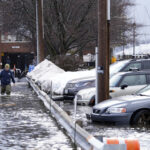With the flood season fast approaching, homeowners in susceptible areas are facing the annual challenge of safeguarding their properties against potential water damage. Floods, being both common and devastating natural disasters, necessitate proactive preparation to mitigate risks. This comprehensive checklist aims to equip homeowners with the essential steps to prepare for the flood season, ensuring safety and minimizing property damage.
1. Understand Your Flood Risk
The first step in flood preparation is understanding your home’s risk. Visit the Federal Emergency Management Agency’s (FEMA) Flood Map Service Center or consult your local government resources to determine your property’s flood zone. This knowledge will guide your preparation strategies and insurance needs.
2. Invest in Flood Insurance
Standard homeowner’s insurance policies typically do not cover flood damage. Consider purchasing flood insurance to protect your home and belongings. Remember, there’s usually a 30-day waiting period for flood insurance policies to take effect, so act early.
3. Safeguard Important Documents
Protect important documents by storing them in waterproof containers or digitally in cloud storage. Essential documents include birth certificates, property deeds, insurance policies, and financial records.
4. Install a Sump Pump with Battery Backup
A sump pump is your first line of defense against basement flooding. Ensure it’s in working order and consider a battery backup to keep it operational during power outages.
5. Utilize Tiger Dam Door Kits for Effective Flood Barriers
Tiger Dam door kits offer a quick and effective way to prevent floodwaters from entering your home. These water-filled barriers are more efficient and environmentally friendly than traditional sandbags.
6. Elevate Electrical Components
Raise electrical outlets, switches, and circuit breakers at least one foot above your home’s expected flood elevation to prevent electrical damage.
7. Clear Gutters and Drains
Keep gutters, downspouts, and drainage systems clear of debris to ensure water can flow away from your property efficiently, reducing the risk of water damage.
8. Create an Emergency Kit and Plan
Prepare an emergency kit with essentials such as non-perishable food, water, medications, flashlights, and batteries. Develop an evacuation plan that includes safe routes and a meeting point for family members.
9. Landscaping and Natural Flood Defenses
Use landscaping to your advantage. Plant native vegetation to prevent soil erosion and consider creating a rain garden to absorb excess rainwater.
10. Stay Informed
Subscribe to local weather alerts and install a weather app on your smartphone to stay informed about flood warnings and evacuation orders.
Preparing for the flood season is a crucial step every homeowner should take seriously. By following this checklist, you can significantly reduce the risk of flood damage to your property and ensure the safety of your loved ones. Remember, the key to effective flood preparation is acting early, so start implementing these measures today to protect your home tomorrow.


